-
 bitcoin
bitcoin $122025.899241 USD
-2.12% -
 ethereum
ethereum $4488.068729 USD
-4.11% -
 bnb
bnb $1315.348019 USD
8.65% -
 tether
tether $1.000457 USD
0.03% -
 xrp
xrp $2.875326 USD
-3.69% -
 solana
solana $222.043604 USD
-4.07% -
 usd-coin
usd-coin $0.999682 USD
0.00% -
 dogecoin
dogecoin $0.249887 USD
-5.62% -
 tron
tron $0.337379 USD
-2.59% -
 cardano
cardano $0.827763 USD
-5.06% -
 hyperliquid
hyperliquid $45.774531 USD
-2.43% -
 chainlink
chainlink $22.079309 USD
-5.87% -
 ethena-usde
ethena-usde $1.000156 USD
0.02% -
 sui
sui $3.482566 USD
-3.57% -
 stellar
stellar $0.386982 USD
-4.92%
What can UNI coins be used for? A comprehensive analysis of the application scenarios of UNI coins
As Uniswap's governance token, UNI coins empower holders with voting rights, incentivize liquidity provision, offer exclusive discounts, and foster broader community engagement within the decentralized exchange ecosystem.
Oct 01, 2024 at 04:36 pm

UNI Coin's Versatile Utility: A Comprehensive Analysis
Uniswap (UNI) is a decentralized exchange (DEX) that operates on the Ethereum blockchain. The UNI token is the governance token of Uniswap, and it grants its holders voting rights in the protocol's governance. In addition, UNI coins offer a myriad of other use cases that enhance the functionality and accessibility of Uniswap.
1. Governance and Voting
UNI holders have the power to participate in Uniswap's governance by proposing and voting on changes to the protocol. This allows the community to actively shape the platform's future while ensuring transparency and decentralization.
2. Liquidity Provision Rewards
Liquidity providers (LPs) on Uniswap who stake their crypto assets to create trading pools receive UNI tokens as rewards for their contributions. These rewards incentivize users to provide liquidity and deepen the exchange's liquidity pool, benefiting traders with lower slippage and more competitive prices.
3. Fee Discounts
UNI holders can use their tokens to pay for transactions on Uniswap at a discounted rate. By staking UNI tokens, users can reduce their trading fees, making the platform more cost-effective for frequent traders.
4. Delegating Voting Rights
Instead of directly participating in governance, UNI holders can delegate their voting rights to other community members or entities that align with their interests. This enables them to contribute to the protocol's decision-making process without requiring full involvement.
5. Community Participation
Beyond governance, UNI coins foster community involvement. Uniswap organizes events, competitions, and educational programs where UNI holders can engage with the project and other community members.
6. Ecosystem Expansion
As Uniswap expands its ecosystem with additional products and services, UNI coins will likely play a pivotal role. Potential use cases include loyalty rewards, staking incentives, and discounts on new platform offerings.
7. Future Token Utilities
The Uniswap community is constantly exploring and developing new use cases for UNI coins. As the protocol evolves and the DeFi industry matures, the utility of UNI tokens is expected to grow significantly, unlocking further opportunities for holders.
Disclaimer:info@kdj.com
The information provided is not trading advice. kdj.com does not assume any responsibility for any investments made based on the information provided in this article. Cryptocurrencies are highly volatile and it is highly recommended that you invest with caution after thorough research!
If you believe that the content used on this website infringes your copyright, please contact us immediately (info@kdj.com) and we will delete it promptly.
- BlockDAG, DOGE, HYPE Sponsorship: Crypto Trends Shaping 2025
- 2025-10-01 00:25:13
- Deutsche Börse and Circle: A StableCoin Adoption Powerhouse in Europe
- 2025-10-01 00:25:13
- BlockDAG's Presale Buzz: Is It the Crypto to Watch in October 2025?
- 2025-10-01 00:30:13
- Bitcoin, Crypto, and IQ: When Genius Meets Digital Gold?
- 2025-10-01 00:30:13
- Stablecoins, American Innovation, and Wallet Tokens: The Next Frontier
- 2025-10-01 00:35:12
- NBU, Coins, and Crypto in Ukraine: A New Yorker's Take
- 2025-10-01 00:45:14
Related knowledge

How to track DeFi activity on a block explorer
Sep 04,2025 at 05:36pm
Bitcoin's Role in Decentralized Finance1. Bitcoin remains the cornerstone of the cryptocurrency ecosystem, serving as both a store of value and a benc...
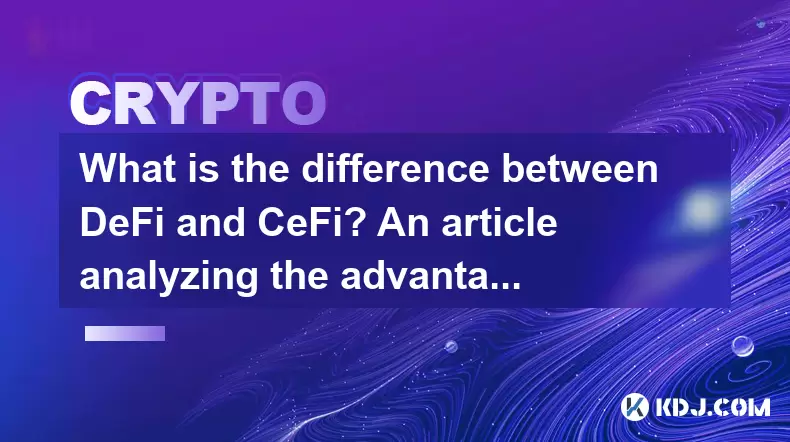
What is the difference between DeFi and CeFi? An article analyzing the advantages and disadvantages of both
Jun 13,2025 at 03:57am
Understanding the Foundations of DeFi and CeFiTo fully grasp the difference between DeFi (Decentralized Finance) and CeFi (Centralized Finance), it’s ...
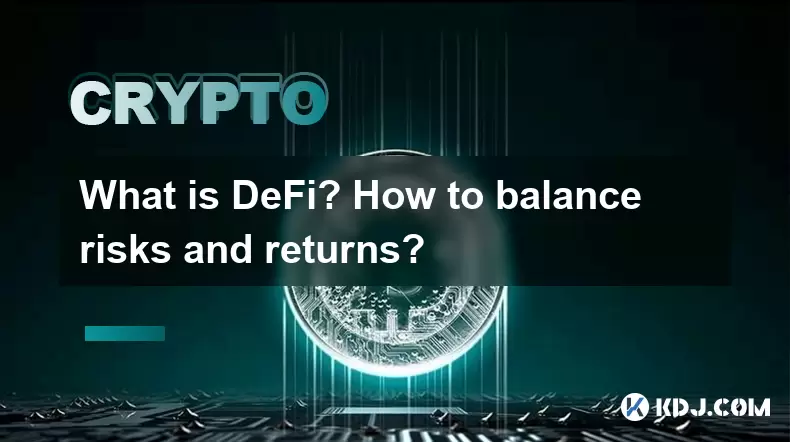
What is DeFi? How to balance risks and returns?
May 31,2025 at 12:22pm
What is DeFi? How to Balance Risks and Returns? Decentralized Finance, commonly known as DeFi, represents a revolutionary shift in the financial ecosy...
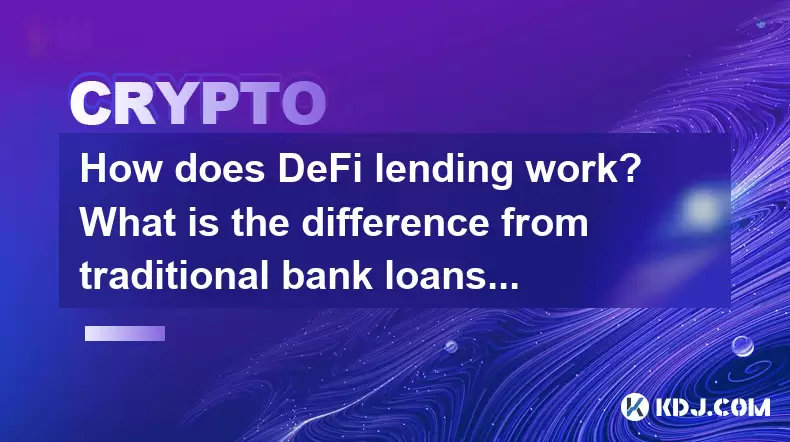
How does DeFi lending work? What is the difference from traditional bank loans?
May 29,2025 at 05:36pm
Introduction to DeFi LendingDeFi lending, or decentralized finance lending, represents a revolutionary shift in the way borrowing and lending are cond...
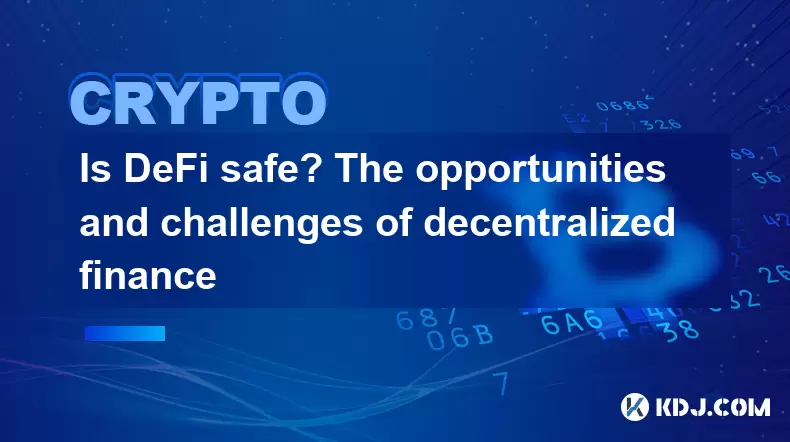
Is DeFi safe? The opportunities and challenges of decentralized finance
May 27,2025 at 02:28pm
Decentralized Finance, commonly known as DeFi, has revolutionized the financial landscape by offering a range of financial services without the need f...
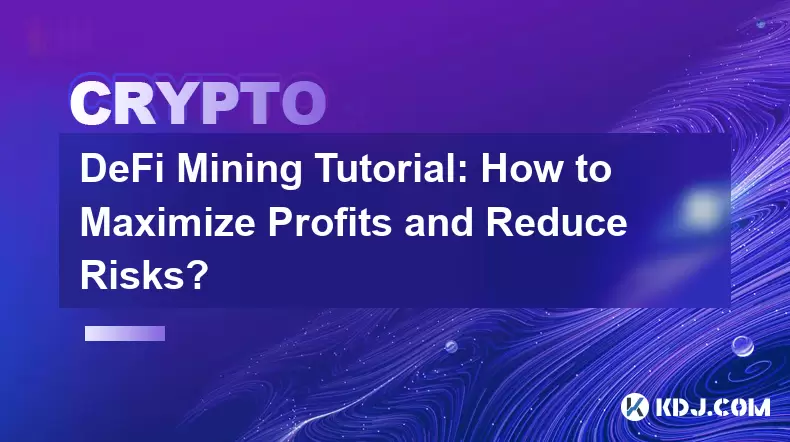
DeFi Mining Tutorial: How to Maximize Profits and Reduce Risks?
May 27,2025 at 07:42am
DeFi, or Decentralized Finance, has opened up a new world of opportunities for crypto enthusiasts looking to maximize their profits through various mi...

How to track DeFi activity on a block explorer
Sep 04,2025 at 05:36pm
Bitcoin's Role in Decentralized Finance1. Bitcoin remains the cornerstone of the cryptocurrency ecosystem, serving as both a store of value and a benc...

What is the difference between DeFi and CeFi? An article analyzing the advantages and disadvantages of both
Jun 13,2025 at 03:57am
Understanding the Foundations of DeFi and CeFiTo fully grasp the difference between DeFi (Decentralized Finance) and CeFi (Centralized Finance), it’s ...

What is DeFi? How to balance risks and returns?
May 31,2025 at 12:22pm
What is DeFi? How to Balance Risks and Returns? Decentralized Finance, commonly known as DeFi, represents a revolutionary shift in the financial ecosy...

How does DeFi lending work? What is the difference from traditional bank loans?
May 29,2025 at 05:36pm
Introduction to DeFi LendingDeFi lending, or decentralized finance lending, represents a revolutionary shift in the way borrowing and lending are cond...

Is DeFi safe? The opportunities and challenges of decentralized finance
May 27,2025 at 02:28pm
Decentralized Finance, commonly known as DeFi, has revolutionized the financial landscape by offering a range of financial services without the need f...

DeFi Mining Tutorial: How to Maximize Profits and Reduce Risks?
May 27,2025 at 07:42am
DeFi, or Decentralized Finance, has opened up a new world of opportunities for crypto enthusiasts looking to maximize their profits through various mi...
See all articles










































































